Poetic Devices Teaching Resources
Explore poetic devices with printable worksheets, comprehension activities and more teaching resources created by our teacher team just for elementary teachers.
This teaching resource collection includes Common Core curriculum-aligned activities and worksheets designed to help students learn to identify the different poetic devices being used as they build their poetry analysis skills. Editable resources are available so you can easily differentiate instruction for individual learners and your state standards.
Has it been a while since you taught about poetry, or at least this particular part of the curriculum? Read on for a primer from our teacher team, including a kid-friendly definition that explains the meaning of poetic devices, plus examples you can share with your class!
What Are Poetic Devices? A Kid-Friendly Definition
If you're introducing poetic devices to your class, it can be helpful to have a definition at hand to explain what they are! Don't worry — our teacher team has you covered!
Poetic devices are special tools poets use to make their words and poems more interesting and fun to read. These tools make the words sound beautiful and help paint a picture in the reader's mind. They can also make the poem easier to understand.
Poetic devices are sometimes called figures of speech or literary devices, and they
Poetic Device Examples List for Kids to Share With Your Students
We know that poetic devices appear all around us — not just in poetry but songs, advertising, nursery rhymes and more. Looking for some examples to share with your students?

Let's take a look at the poetic device list our teacher team uses to help illustrate this concept for students.
- Simile and Metaphor — Two poetic devices often taught together are simile and metaphor. The former is a comparison between two unlike things using "like" or "as." A metaphor, on the other hand, is a direct comparison between two unlike things, stating that one thing is another.
- Personification — When the poet gives human qualities or characteristics to non-human entities, it's called personifying or personification.
- Hyperbole — An exaggerated statement is a great poetic device for writers who are trying to create emphasis or heightened effect.
- Alliteration — A popular poetic device example with kids is alliteration, the repetition of consonant sounds at the beginning of neighboring words. It often shows up in nursery rhymes and songs, and it's often used outside of poetry as well because it's particularly effective in helping the reader remember what they've read.
- Assonance — Similar to alliteration but slightly different, this poetic device example is the repetition of vowel sounds within neighboring words.
- Onomatopoeia — When a poem uses words that imitate or suggest the sound they describe like buzz or bam, it's called onomatopoeia.
- Imagery — Imagery is a device that makes use of vivid and descriptive language to appeals to the reader's senses.
- Symbolism — A dove might symbolize peace in a poem, or a spring might represent youth. Both of these are good examples of using of objects, characters or actions to represent abstract ideas or qualities.
- Repetition — Another example of a poetic device that's effective at making the reader remember, repetition is the deliberate use of words, phrases or sounds for emphasis or rhythmic effect.
- Irony — A literary technique that involves a contrast between expectations and reality is irony. This word is often misused, so it's helpful to illustrate with a variety of examples for your students! For example, a firehouse burning down would be a good example of irony. Rain on your wedding day, on the other hand, is not ironic. We really don't think.
- Allusion — Making a reference to a person, event or work of literature that is well-known can be
- Oxymoron — This figure of speech combines contradictory terms for emphasis or dramatic effect.
- Free Plan
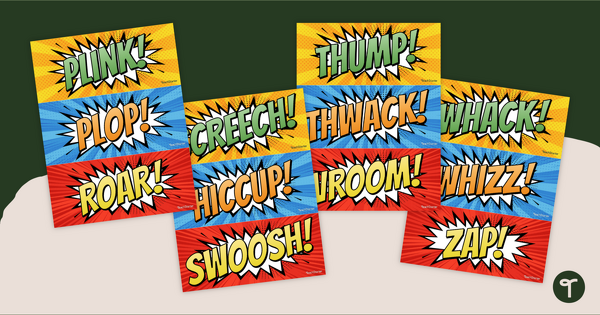
Onomatopoeia Words - Vocabulary Display
Display a fun onomatopoeia word wall in your classroom with printable cards containing onomatopoeia examples.
- Plus Plan
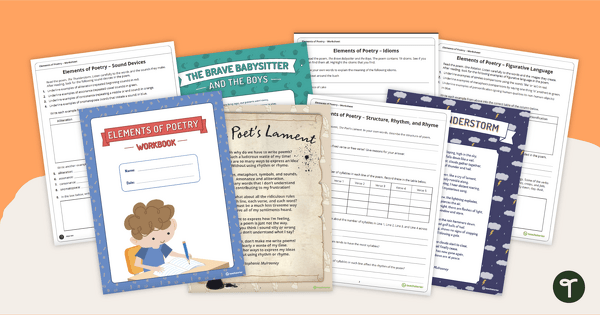
Poetry and Figurative Language Workbook - Poems for Middle School
Print a pack of poems with figurative language worksheets to practice poetry analysis.
- Plus Plan

Exploring Figurative Language in Poetry Workbook
Teach your upper elementary and middle school students to read, analyze, and discuss poetry with a printable and digital poetry workbook.
- Plus Plan
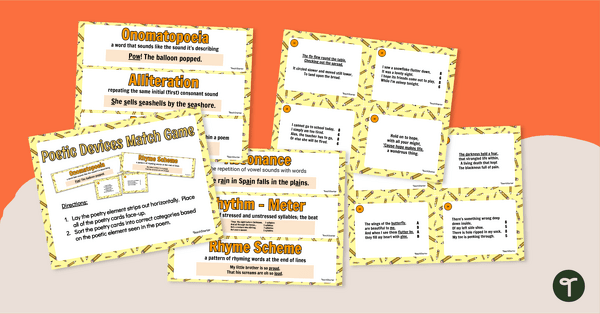
Poetry Match Game - Elements of Poetry Activity
Practice identifying poetic elements in examples of poems with a poetry sorting activity for fourth grade and fifth grade.
- Plus Plan

Writing With Alliteration Worksheet
Identify and create alliteration patterns in texts.
- Plus Plan

Elements of Poetry Teaching Slides
Explore the key elements of poetry with your students using this comprehensive and age-appropriate slide deck perfect for your poetry writing unit.
- Plus Plan
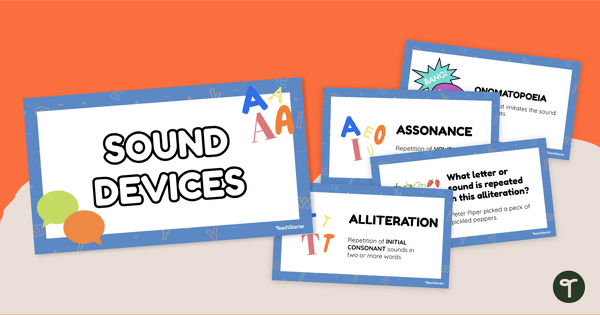
Sound Devices in Poetry - Teaching Slide Deck
Teach the different sound devices used in poetry with this Google Slide Deck.
- Plus Plan
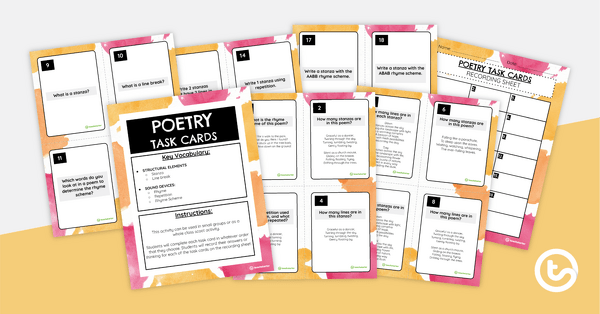
Poetry Task Cards
A set of 20 task cards to practice different elements of peotry.
- Plus Plan
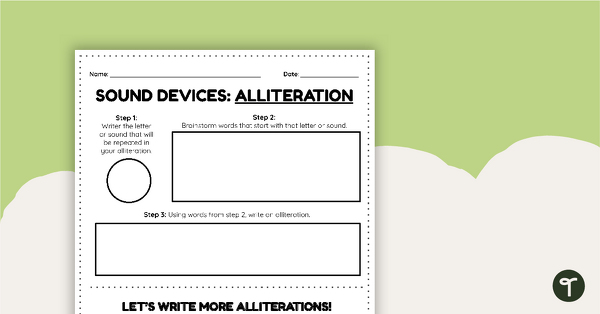
Alliteration Brainstorming Template
Use this brainstorming template to practice using the sound device alliteration.
- Plus Plan
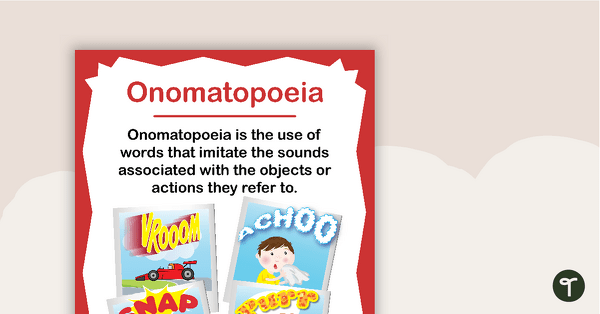
Onomatopoeia Poster
A poster providing a definition and examples of onomatopoeia.
- Plus Plan
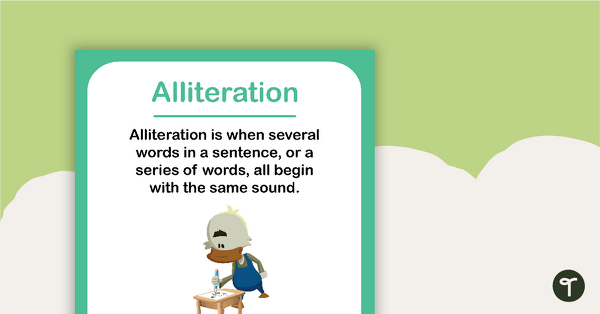
Alliteration Poster For Young Students
A poster to use with young students when teaching alliteration.
- Plus Plan
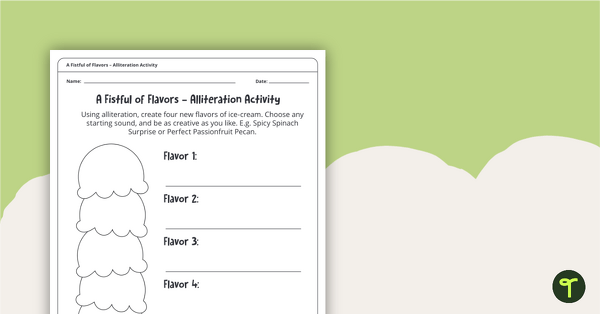
A Fistful of Flavors Alliteration Activity
Make alliteration fun with a printable worksheet that challenges students to create flavors of ice cream.
- Plus Plan
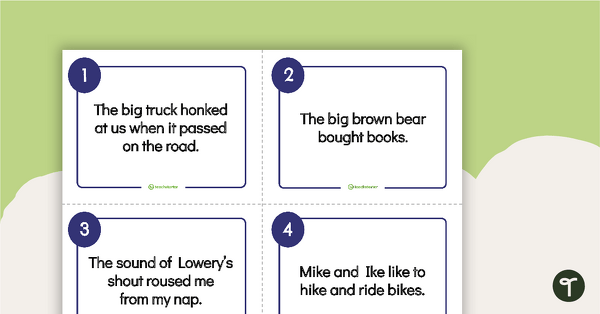
Sound Devices Sorting Activity
Reinforce sound devices used in text by sorting 16 poetic device cards into their appropriate category.
- Plus Plan
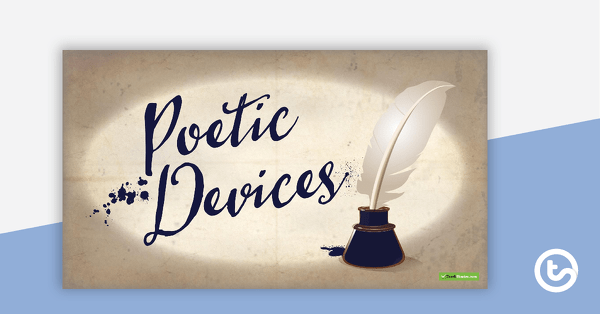
Poetic Devices Teaching Slides
Explore examples of poetic devices using this comprehensive and age-appropriate slide deck perfect for your poetry writing unit.
- Plus Plan
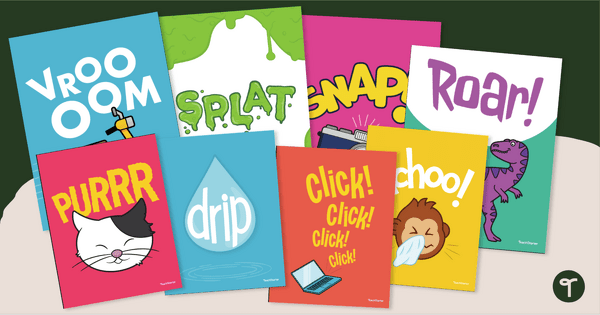
Figurative Language Anchor Chart - Onomatopoeia
Help young readers and writers recognize figurative language and onomatopoeia with a set of onomatopoeia anchor charts.
- Plus Plan
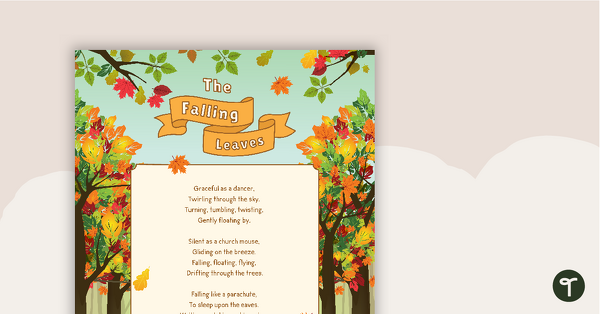
Exploring Poetry Worksheet - Alliteration
A worksheet to help students understand alliteration in poetry.
- Plus Plan

Interpreting Figurative Language - Worksheets
Explore figurative language in poetry with this age-appropriate poem and accompanying vocabulary questions.
- Plus Plan
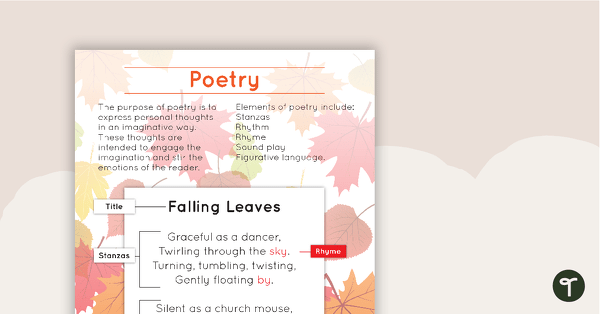
Poetry Anchor Chart With Annotations
Use this poetry anchor chart to introduce your students to the structure and language features of poems through an annotated example.
- Plus Plan
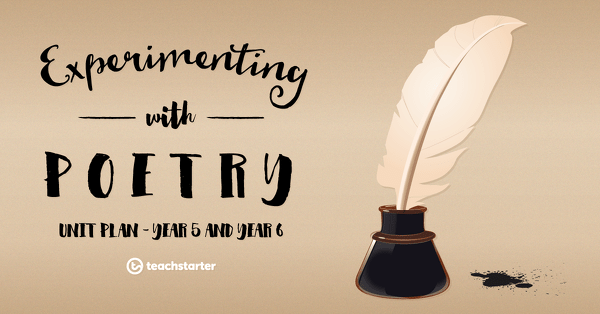
Sound Devices
A 60 minute lesson in which students will identify and investigate sound devices in poetry.
- Plus Plan
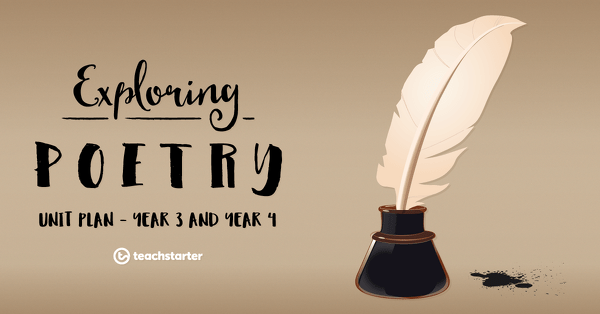
Sound Play in Poetry - Onomatopoeia
A 60 minute lesson in which students will identify and explore onomatopoeia in poetry.